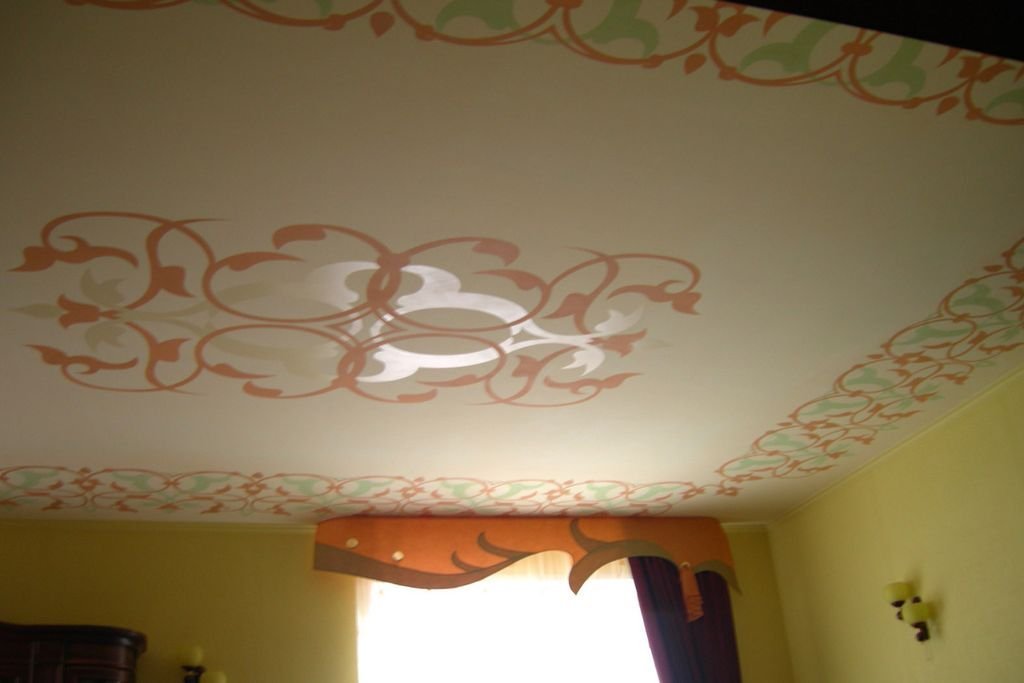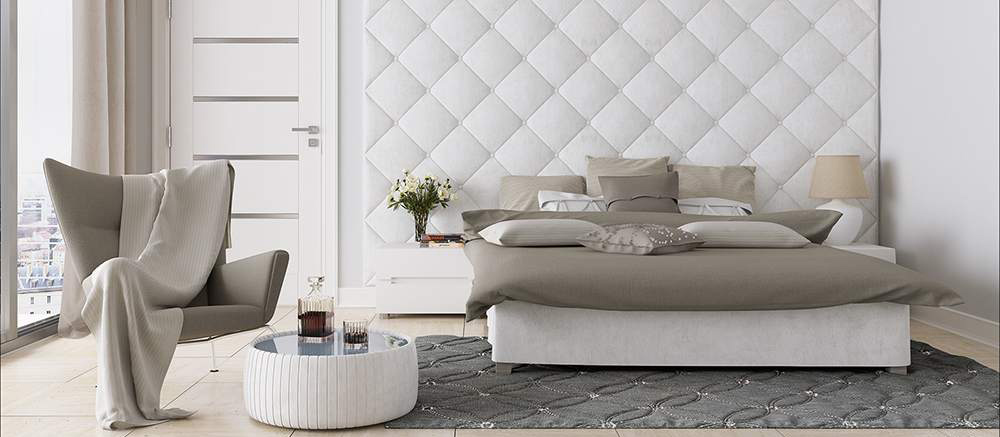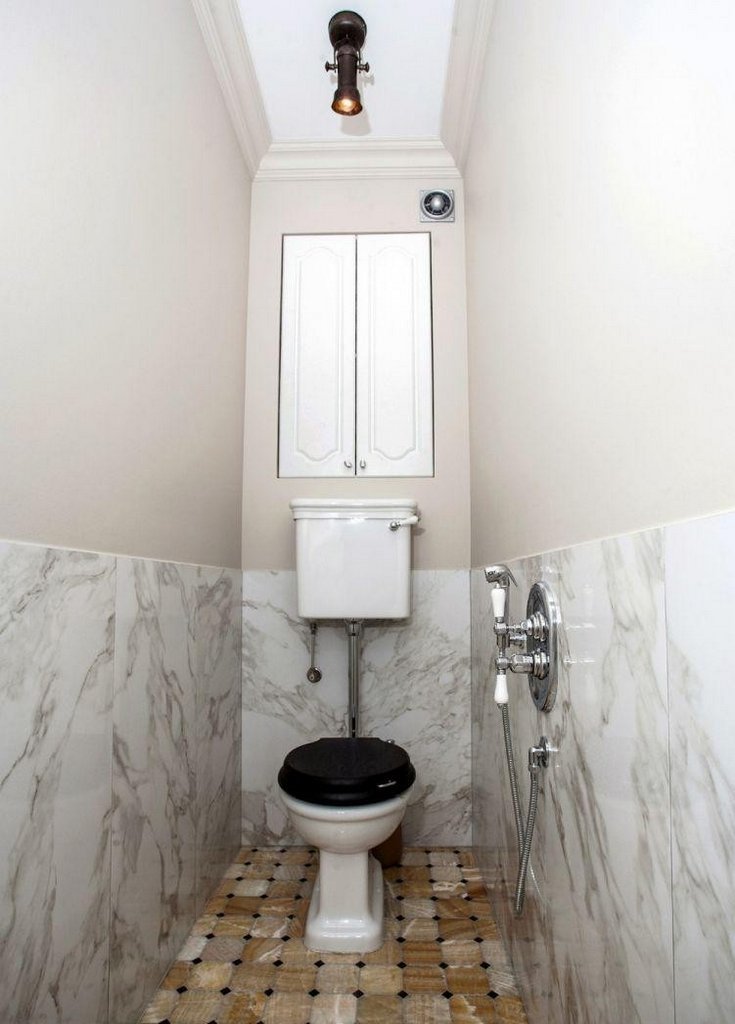Content
- Plastered ceiling
- Wallpapering the ceiling
- PVC panel ceilings
- Styrofoam ceiling tile
- Drywall Ceiling
- Stretch ceiling
Ceilings in the kitchen require special attention, since increased humidity, grease and soot create extreme operating conditions that not every finishing material can withstand. In order that the ceiling does not lose its original attractiveness and the kitchen remains cozy and beautiful as long as possible, you need to choose the right kind of decoration. A review of popular materials and ceiling design options will help you decide which ceiling is best in the kitchen.

Plastered ceiling
The classic version of the design of the ceilings in the kitchen is their plastering, followed by putty and whitewashing or painting. If, after careful leveling with plaster and putty mixtures, the ceiling in the kitchen is whitewashed, it will not be possible to clean it of grease and soot. Regular whitewashing over time will lead to the formation of ugly sagging, to eliminate which you will have to remove the coating along with the plaster.

If you decide to adhere to the classics, we recommend choosing a more modern and practical finish - silicone or acrylic paint. Such a coating will allow washing kitchen ceilings an unlimited number of times.
Tip: when yellow spots appear, the coating can be refreshed with the previously used emulsion composition, not forgetting to pre-coat the yellowed areas of alkyd matte paint. The primer will prevent stains from getting through the finish.

Pros:
- low cost of materials;
- environmental friendliness;
- incombustibility;
- resistance to changes in humidity and temperature;
- the ceiling height does not decrease.
Minuses:
- time consuming;
- high complexity of finishing work;
- lack of protection against flooding.
Tip: if you are going to plaster the ceiling in the kitchen in a new building, use a sickle and fiberglass. This will help prevent cracks in the ceilings in the kitchen as the building shrinks.
Wallpapering the ceiling
If you paste wallpaper on the plastered ceiling in the kitchen, you will get a completely different result. For the kitchen, it is best to choose washable vinyl wallpaper or wallpaper for painting. They have sufficient resistance to moisture and pollution, in addition, they can be repainted several times.

Pros of vinyl wallpaper:
- wide selection of colors and design options;
- lower surface requirements compared to paint;
- the possibility of hiding microcracks on the plaster resulting from shrinkage;
- permissible cleaning humidity.
Minuses:
- under the influence of steam and hot air, heavy wallpapers begin to peel off from the surface after some time;
- even the most moisture-proof wallpapers will not withstand leakage from neighbors from above.

PVC panel ceilings
The second budget option for ceilings for the kitchen is a coating of plastic panels. Unlike plaster, this design method is simpler with independent execution. Plastic panels have all the characteristics necessary to withstand difficult operating conditions.

Pros of the ceiling for the kitchen made of plastic:
- low cost;
- ease of installation;
- ease of washing and cleaning;
- neat appearance;
- wide selection of textures and colors;
- moisture resistance;
- soundproofing properties;
- good leakage protection;
- undemanding to the surface of the base ceiling;
- the ability to hide communications and installation of recessed fixtures.

Minuses:
- decrease in ceiling height by 5-15 cm;
- plastic is not suitable for creating an elite kitchen design.
Tip: soot and dust accumulate in the seams between the panels, so it is better to prefer seamless patterns when decorating the ceiling for the kitchen. Glossy panels are better than matte because they are less dirty.
Styrofoam ceiling tile
Foam tile allows you to update the ceiling in the kitchen with minimal cash costs and as soon as possible.

Advantages of the adhesive ceiling for the kitchen:
- budget finish;
- low requirements for the quality of alignment of the ceiling surface;
- exceptional ease of installation;
- preparation and gluing take little time;
- moisture resistance;
- the possibility of washing.
Minuses:
- the white color of the tile can quickly turn yellow;
- decorative tiles with a relief pattern will collect soot and grease in the recesses of the relief, which will be very difficult to clean
- limited design options.

Drywall Ceiling
What can a suspended ceiling for a kitchen be made of, masking all communications - from wires to a ventilation pipe? Of course, from drywall. From the point of view of design, drywall is a material of a higher level, since it allows you to realize any ideas. Spectacular multi-level designs can transform a standard room, give it a touch of personality.

Pros:
- an easy way to level the ceiling surface;
- no need to remove old trim;
- the ability to use lamps of any type;
- the availability of DIY installation;
- plasticity of the material allows you to create structures of any shape, multi-level ceilings for a modern kitchen;
- a variety of options for finishing and decoration.

Minuses:
- a significant decrease in the height of the walls;
- inability to retain water; in the event of a leak, a complete replacement of the material will be required;
- susceptibility to deformation and cracking.
Tip: to paint the ceiling for the kitchen from drywall, it is advisable to use not the usual water-based emulsion paint, but acrylic paint. The surface painted with this composition can be washed with detergents.
Stretch ceiling
For the installation of suspended ceilings for the kitchen, a special PVC film is used. A variety of textures allows you to choose the right material for any style of interior design.

Pros:
- speed of installation;
- base ceiling surface does not need processing;
- moisture resistance;
- camouflage wiring, ventilation;
- the ability to use spot lights;
- practicality - can be washed with soapy water;
- effective protection against leaks - the ability to hold large volumes of water;
- large selection of textures and colors.

Minuses:
- self-assembly is not possible;
- instability to mechanical damage;
- decreasing the height of the walls.
Each of the listed materials for the ceiling in the kitchen has its own advantages and disadvantages. The choice of finishes will depend on the design of your kitchen, as well as on your financial capabilities and experience in the field of repair.

EXPERT SITE
Tsugunov Anton Valerevich
Master Station Wagon
- Since 2003, I have been engaged in the repair and decoration of premises.
- Over 100 completed objects.
- I appreciate the quality, more than the quantity!
Personal page >>>
Friends!
I offer you the service "Friend Builder"
As this site develops, subscribers and visitors are turning to me more and more often asking for help with advice on various issues of repair and decoration.
Questions are sometimes asked very complex and interesting. You can’t write an article for each situation, so I decided to advise you individually.
Thanks to you, friends, a new direction of my favorite work has been born - share your experience and benefit everyone who is undergoing repairs!
Get a one-time consultation from me >>>
Order full apartment repair support >>>


